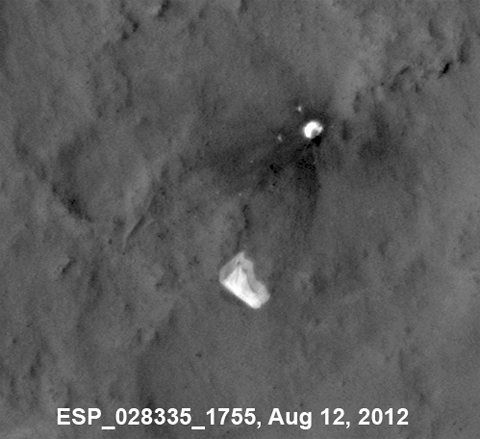Martian Wind

A time lapse of seven images showing the Curiosity Rover's parachute blowing in the wind on Mars.
Image Credit: NASA/JPL-Caltech/Univ. of Arizona
April 4, 2013
In August of 2012, the Curiosity rover made a spectacular landing on the red planet with aid from a heat shield, sky crane, and parachute. Since then, the Mars Reconnaissance Orbiter — a NASA satellite that has been revolving around Mars since 2006 — has been keeping tabs on the rover.
The above images track the movement of Curiosity's parachute on the surface since one week after the rover's landing. As you can see, the parachute has shifted several times over the past few months, a result of wind near the surface.
Just like on Earth, wind on Mars stems from differences in atmospheric pressure; air molecules move from areas of higher pressure to lower pressure, causing a flow of gas. Although Mars has an atmosphere with roughly 0.6 percent of the Earth's atmospheric pressure, winds generated on Mars have reached up to 60 miles per hour as measured by the earlier Viking Landers.














